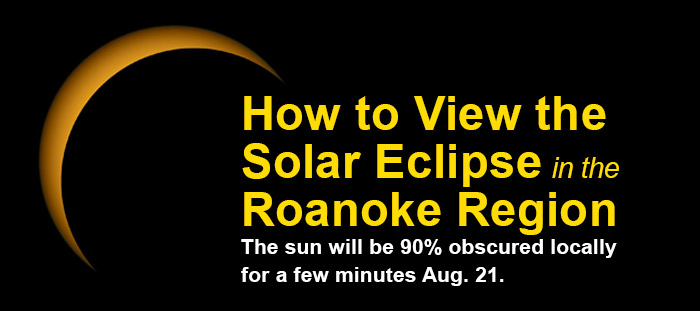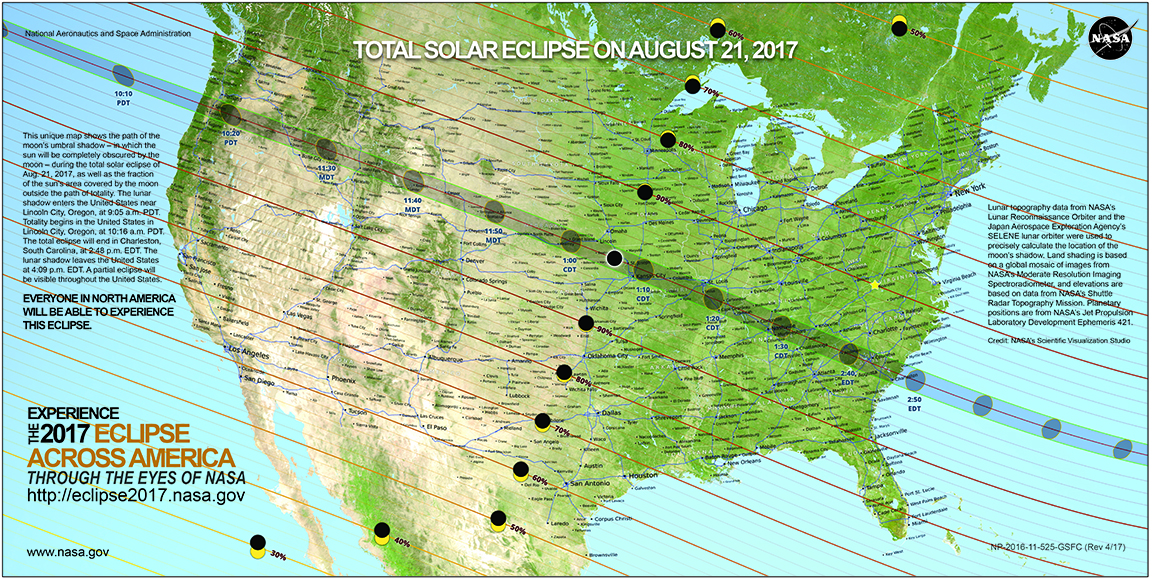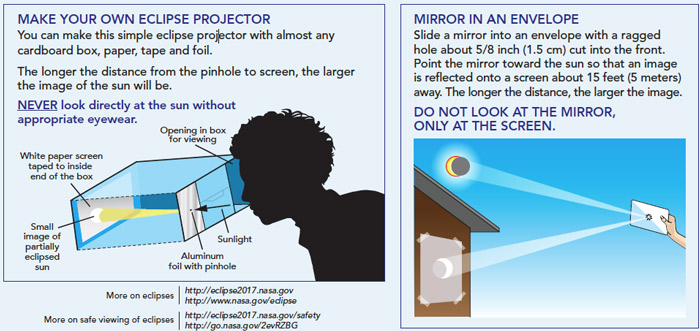How to View the Solar Eclipse in the Roanoke Region

Unless you’ve been hiding under a rock or out in the woods (we won’t judge!), you’ve probably seen all the buzz about the solar eclipse on Aug. 21.
Here’s everything you need to know about the eclipse, and how to view it safely from the Roanoke Region. In most of the region, 90 percent of the sun will be obscured by the moon at the estimated peak time of 2:40 p.m. (That means if it is a sunny day, it will get almost completely dark during the event.)
A solar eclipse happens when the moon casts a shadow on Earth, fully or partially blocking the sun’s light in some areas. Observers within the path of totality will be able to see the sun’s corona (which is a light ring with the moon in the center, weather permitting). Observers outside this path, such as in the Roanoke Region, will see a partial eclipse.
Here’s how to view the solar eclipse in the Roanoke Region (with help from our friends at NASA).

Who can see the total solar eclipse?
It will be viewable to everyone in North America, with 100 percent darkness along the path on the map. It is the first total eclipse in the United States in 38 years. Want to get a preview of what it will look like here? Just put in your ZIP code.
Where is the best place to watch?
Find a nice clear spot with a good view of the sky. If you want to see the total eclipse, the closest location is about 190 miles away in Charleston, S.C.
How do you watch it?
For the best viewing experience you need eclipse glasses; you should never look directly at the sun and regular sunglasses are not safe for look at the eclipse. (Eclipse glasses can be found at retailers and look like paper 3D glasses with dark lenses. You know the glasses are safe if you put them on in your home and you can’t see any lights through them, including lamps or overhead lights.)
You can also build your own eclipse projector or use a mirror and envelope.

How long will it last?
The peak part of the eclipse (2:40 p.m. in the Roanoke Region), when there is the most darkness, will last up to 2 minutes. The moon will start to cover the sun shortly after 1 p.m. and full sunlight will return at approximately 4 p.m.
When will it happen again?
The next solar eclipse viewable in the U.S. is April 8, 2024.
Where can I learn more?
NASA has a page dedicated to the event and plenty of resources to plan your viewing experience.
What events are happening locally?
There are plenty of opportunities to take in the eclipse with others from around the region. (And many locations are providing solar eclipse glasses. See the list of solar eclipse events in the Roanoke Region.



 Powered by Roanoke Outside
Powered by Roanoke Outside